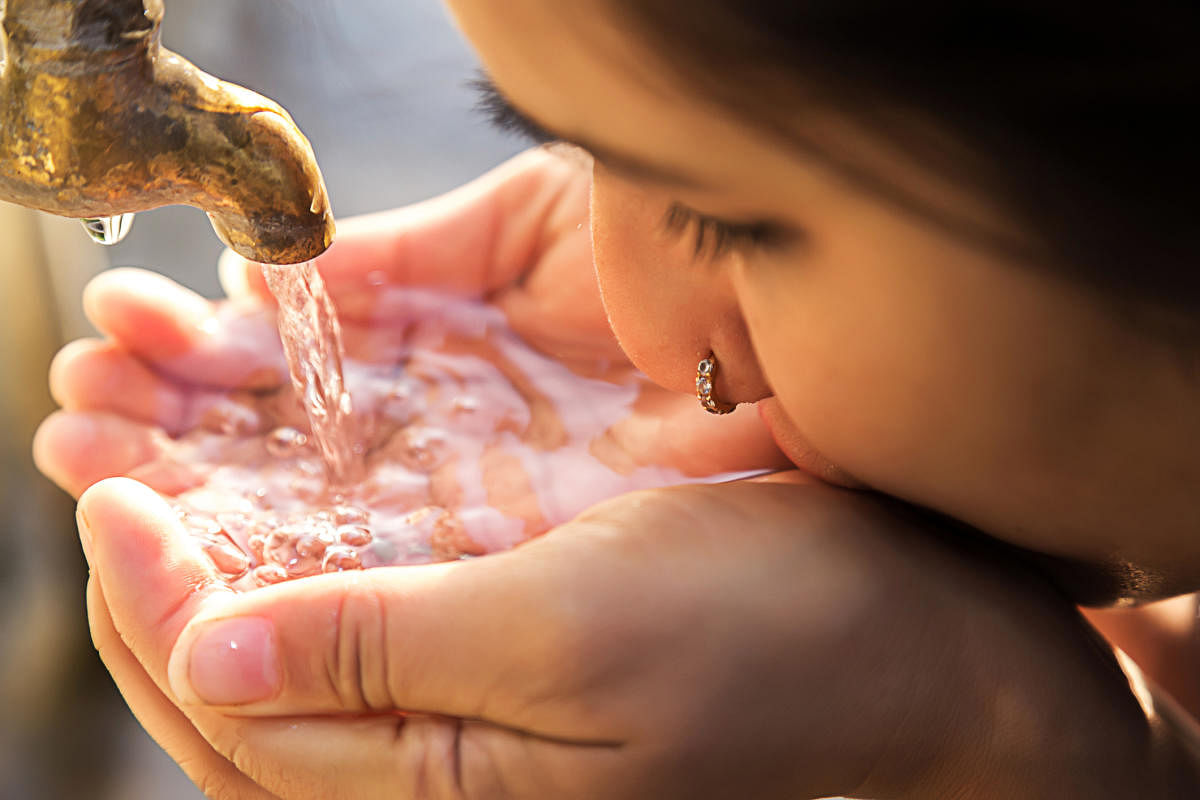Every drop of water matters: that drip every second in your bathroom can yield 15 litres in a day. A litre saved from the daily carwash becomes big, given India’s 30 million cars. Turn off the tap while brushing your teeth. At our [mostly] big fat weddings, become water wise. These small tips matter because of the big warning sign ahead: India is entering the danger mark.
The United Nations has warned that two-thirds of the world will experience a severe shortage of drinking water by 2025. The 2016 National Water Framework Bill – a roadmap to help manage India’s water resources – passed in the Lok Sabha hasn’t made the cut yet in the Rajya Sabha. The fourth National Water Policy report – following the 2012 edition – is in the pipeline. India, home to 16% of the world’s population, is in the danger zone, as signalled by the UN.
Here’s the shocker: India is the biggest extractor of its groundwater, indeed for 80% of the population’s needs. India contains 4% of the earth’s water resources bottled up in a mere 2.4% of the planet’s land area. Recent NASA data shows India among the hotspots where overuse of water resources has led to a decline in available freshwater: that is, we are extracting more water from the ground rather than harvesting rainwater. Plenty that can be harnessed goes down the drain.
With the population galloping beyond 1.3 billion and our water resources fast depleting, everyone must save water. Water saved is water gained. We must read the writing on the wall and act fast.
A 2019 report of the Niti Aayog warned that Indian cities are going through high water stress, affecting close to 600 million people. Last year, Chennai’s 11 million citizens got a rude shock one day when their taps ran out of water: little by little, the four key reservoirs that had fed the coastal city had been sucked dry. Private water tankers quenched their thirst, but at a high cost.
Groundwater, though part of the hydrological cycle and a community resource, gets exploited time and again. A World Bank survey reported that India had drilled 30 million tube wells in just five decades to irrigate 35 million hectares. “Over 80% of the rural and urban domestic water supplies in India are served by groundwater, making India the world’s largest user of groundwater,” it noted. If we keep mining water like that, more than half of India will reach critical levels of groundwater depletion within two decades, affecting a quarter of the total agricultural production.
India’s blueprint to efficiently run our water resources will be mapped out in the fourth edition of the National Water Policy [NWP] report which will be out in June. This report, drafted by a 11-member team of experts headed by former Planning Commission member Prof Mihir Shah, who was formerly a key player in the central ministry of water resources, will build on excellent inputs – and advance warning notices – enunciated in earlier NWP reports.
The maiden 1987 NWP had mapped out a warning in big bold letters that “water will become even scarcer in future” and called for “utmost efficiency in water utilisation and a public awareness of the importance of its conservation.” It wanted the governments – water is a state subject in the Constitution but it also provides leeway to link both Centre and the states to address the issue in a holistic way – to develop, conserve, utilise and manage the important resource, guided by national perspectives.
In addition, it sought out a well-developed information system – long before the digital and social media blitz – and stressed that “recycling and re-use of water should be an integral part of water resource management.”
As for groundwater, way ahead of the US and China in extracting it, the 1987 NWP exhorted periodical “reassessment on a scientific basis of the groundwater potential, taking into consideration the quality of the water available and economic viability, regulated as not to exceed the recharging possibilities, as also to ensure social equity.” In its optimism, it visualised that water facilities should be provided to all Indians, rural and urban, by 1991 and it hoped that this would have been possible with its recommendations: “conservation consciousness should be promoted through education, regulation, incentives and disincentives.”
To secure India’s water future, we need to splash the entire country with short, easy to remember information in several languages. If we must go forward into the future, we just must step back, and even go back in time to emulate our ancestors, who have blessed us with the finest hydraulic engineering and water-securing feats. From ancient India’s water engineers and city planners who gave us the 3,000-BC Harappan sites to the stepwells/water storage examples from several dynasties, our history is gushing with ‘save water’ ideas that are relevant today.
Regulating groundwater extraction, recharging our aquifers, reusing treated water and rainwater harvesting are all critical for our water security. Two Bills from the government - the Model Bill for the Conservation, Protection, Regulation and Management of Groundwater, 2016, and the National Water Framework Bill, 2016 – need plenty of watering and nurturing as they await enactment.
In December 2015, a committee constituted by the Ministry of Water Resources, River Development and Ganga Rejuvenation under the chairmanship of Mihir Shah, suggested a draft National Water Framework Bill, 2016, which among other things, contains provisions for an overarching national legal framework with principles for protection, conservation, regulation and management of water as a vital and stressed natural resource. The draft Bill was circulated to all the States/Union Territories for their comments. Where there’s a Bill, there is a way. Meanwhile, as individuals, let’s start saving water.
(The writer specialises in public policy, politics and religion)
